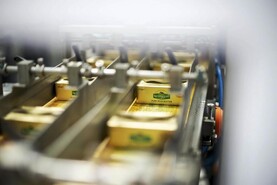Despite an easing in the price of concentrate feed since autumn 2023, other costs have remained high, leaving profit margins tight on local dairy farms.
The latest update of the Drumlin Farm model produced by local dairy consultants, Ian Carrick and Jason McMinn, shows the milk price required for dairy farmers to breakeven has actually edged up over the period, rising from 36.47p/l to now stand at 36.76p/l.
The Carrick/McMinn model reflects typical performance on their client farms, with the data adjusted to mirror a 100-cow dairy farm relying on a mix of owned and conacre land. When calculating the breakeven milk price, allowance is made for the fact cash must be generated to cover household expenses, etc, as well as pay off loans and tax bills.
Finances
The model does show that dairy farmers are now in a better financial position than last autumn, mainly thanks to increased milk prices. The latest update assumes a milk price paid of 37p/l, compared to 30p/l, helping to generate total income of £317,117 – an increase of 17%.
However, that income figure is not as high as it might have been, with yield per cow down from 7,800l to 7,600l on the back of lower forage quality, as well as poorer herd fertility and higher replacement rates. Direct support by way of the Basic Payment Scheme (BPS), has also been cut by 9%, with DAERA using this money to fund the new beef carbon reduction scheme.
Costs
Total cash costs are up slightly, even though the amount spent on concentrate feed is marginally down. The price paid for this feed has dropped £20/t, but this has been partly balanced by the need to feed more tonnes to compensate for lower forage quality.
A number of costs such as fertiliser and fuel are not changed. However, conacre is up 10%, farm repairs and maintenance up 5%, with increases also seen in vet costs and farm insurance. It leaves total cash costs at £226,613, or 29.82p/l.
Net cash
To calculate net cashflow in the business, Carrick and McMinn allow for various realities often excluded in other accounting methods. That includes personal drawings, which have been increased 3% to reflect continued cost-of-living pressures, but still remain at a relatively modest £35,535.
The tax bill for 2023/2024 is estimated at £5,000 and is significantly down on the £14,000 from the previous year. There are also bank loans to be repaid and higher purchase agreements on machinery.
Once all these expenses are factored in, it leaves Drumlin Farm with a net cashflow of £1,801 – in other words it is just about breaking even. Last autumn, this cashflow figure stood at -£50,499.
Advice
Commenting on the data, Ian Carrick said the best advice for milk producers remains to focus on the parts of their business they can influence.
“Feed efficiency in particular must be addressed given that meal represents the biggest variable cost in the dairy enterprise,” he said.
However, he also pointed out that comparing the current milk price of 37p/l with the projected breakeven price of 36.76p/l is misleading, as it suggests a cash neutral position.
“Unfortunately, given the milk price in the last year, many dairy farmers have increased debt through either overdraft increases or higher creditor balances – both these balances will need reduced and the current milk price leaves no opportunity for that,” said Carrick.
He argued that current milk prices are not sufficient to deliver a sustainable farm business with the ability to invest.
“Whilst the dairy processors continue to invest heavily in processing capacity, they should consider the likely decline in future supply volumes. The increasing focus by politicians, processors and retailers on environmental sustainability needs to be reset to include economic sustainability of farming families,” said Carrick.






 This is a subscriber-only article
This is a subscriber-only article










SHARING OPTIONS: